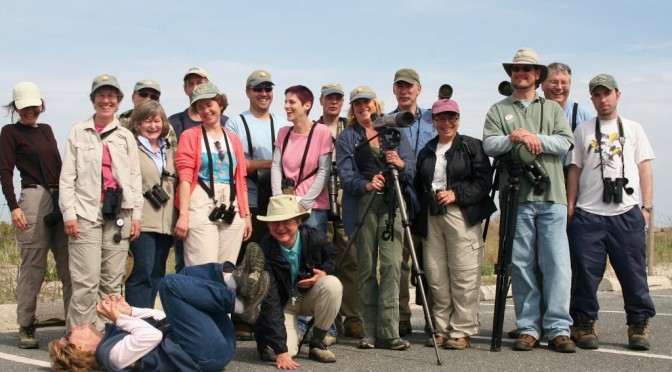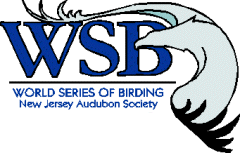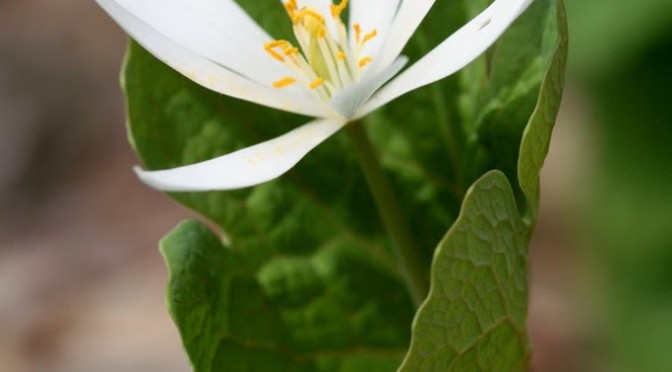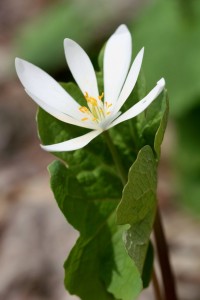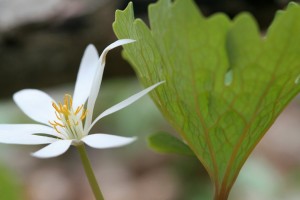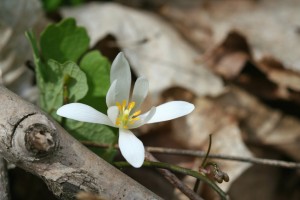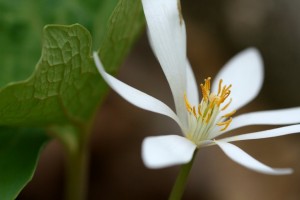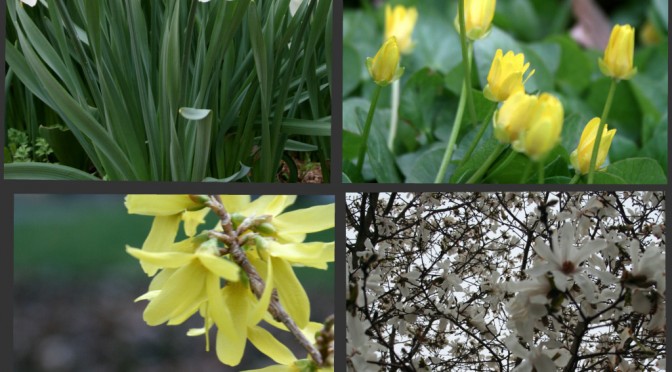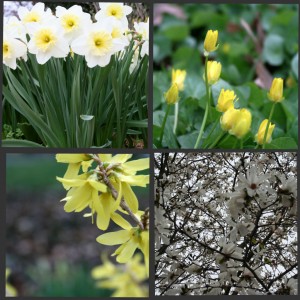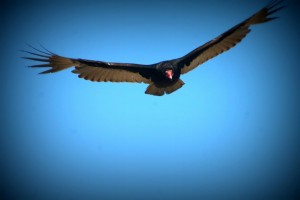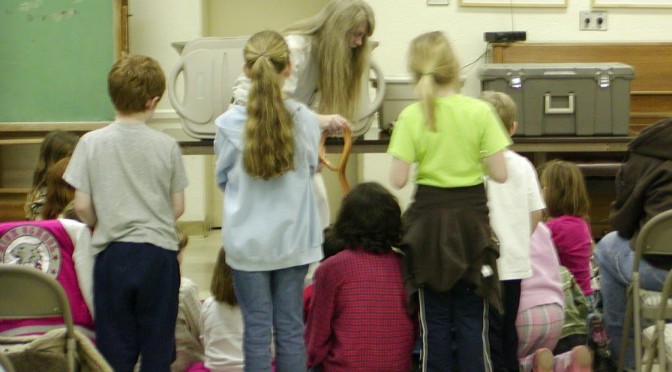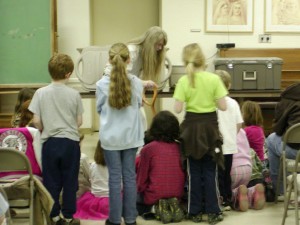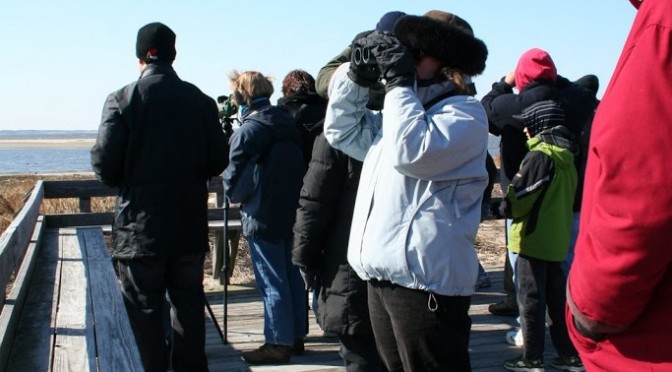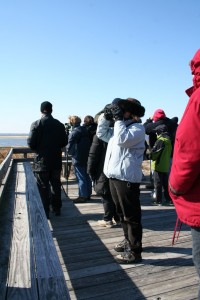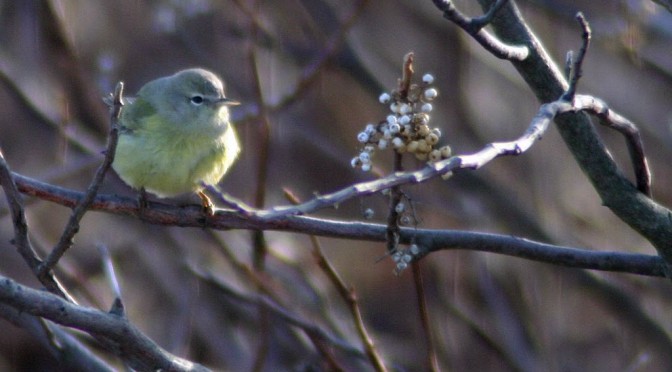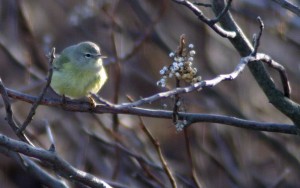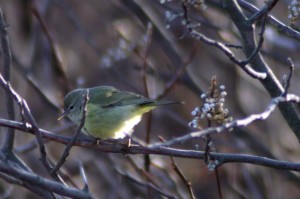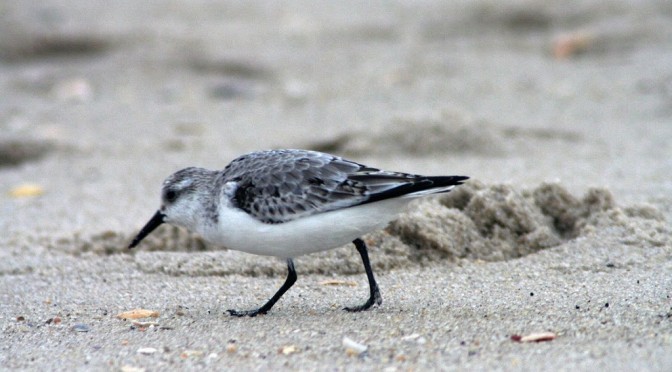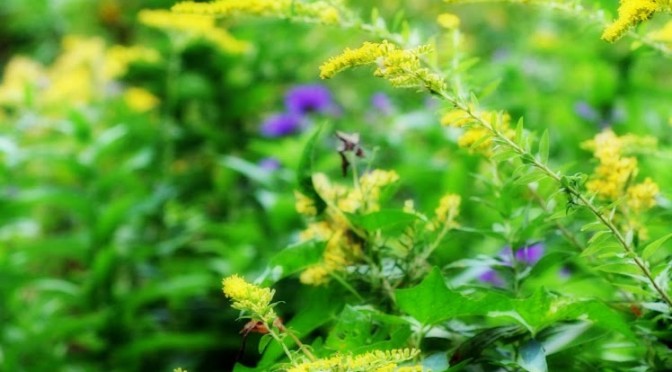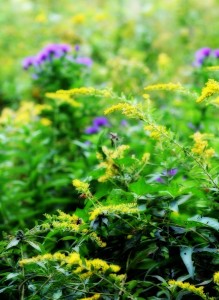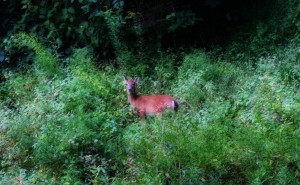I was writing this post in my head yesterday as I sped down the parkway to Island Beach State Park and expected to have to title it, “How Not to Lead Your First-Ever Field Trip”. First on the list was to be, “Be on time for once!” but I was already late when I’d thought of my post title.
Anyway… you might remember me mentioning here that I’m now responsible for planning field trips for my local audubon chapter. It’s gone well so far, but I couldn’t find anyone able to lead our November trip to Island Beach. I was even almost begging near strangers at the hawkwatch in Cape May two weeks ago. Remember Lloyd? Yeah.. he said no, too. I never found anyone, so short of canceling the trip I thought I’d make a go of leading it myself and hoping no one showed up.
😉
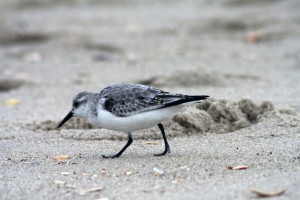 The weather was awful… rainy and foggy… so zero participants seemed like a real possibility. It turned out there were seven people waiting on me to get there, and thanks be, all were beginning birders, as is typical for these field trips. Beginning birders are easy to please and, luckily, don’t know gulls any better than I do. We just agreed at the outset to ignore them! We saw some of my beloved sanderlings on the beach and I struggled with some terns that were lazing among the fiishermen, but I decided they were Forster’s and (laugh) they all believed me!
The weather was awful… rainy and foggy… so zero participants seemed like a real possibility. It turned out there were seven people waiting on me to get there, and thanks be, all were beginning birders, as is typical for these field trips. Beginning birders are easy to please and, luckily, don’t know gulls any better than I do. We just agreed at the outset to ignore them! We saw some of my beloved sanderlings on the beach and I struggled with some terns that were lazing among the fiishermen, but I decided they were Forster’s and (laugh) they all believed me!
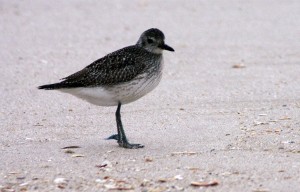 Being *the leader* imparts a certain authority that I’m not entirely comfortable with, but other people who lead trips have told me that pretending confidence is half the game. Whatever. Here is the second of three shorebirds that I can identify in winter. Funny how Black-bellies are so wary compared with the sanderlings… I had to stalk this guy up into the dunes for a pic.
Being *the leader* imparts a certain authority that I’m not entirely comfortable with, but other people who lead trips have told me that pretending confidence is half the game. Whatever. Here is the second of three shorebirds that I can identify in winter. Funny how Black-bellies are so wary compared with the sanderlings… I had to stalk this guy up into the dunes for a pic.
We spent some time scanning Barnegat Bay and came up with a couple groups of Bufflehead and a couple Loons, but that was it. Island Beach is a barrier island and has a wonderful maritime forest like Sandy Hook; we found some Kinglets and Yellow-rumps, but ended up watching the feeders at the nature center to escape the rain for a bit and actually be able to study some common birds. The beginners liked that, I hope, plus I got my first Junco of the season.
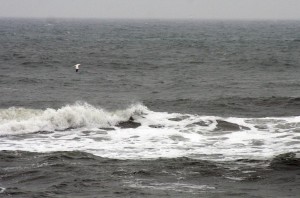 The show of the day was the Northern Gannets in a feeding frenzy just off the beach. What cool birds! Sadly, I don’t think Gannets are easy for beginners to appreciate. They all kept asking me, “How can you tell they’re not gulls?” I guess their crappy little binoculars didn’t help any. I remember feeling the same way the first time I saw Gannets… the field trip leader pointed out back then that the Gannets were refrigerator white and pointed at both ends, so I just repeated that back to the group. Plus, the way they drop like arrows into the water is just the coolest thing and unique to Gannets, maybe.
The show of the day was the Northern Gannets in a feeding frenzy just off the beach. What cool birds! Sadly, I don’t think Gannets are easy for beginners to appreciate. They all kept asking me, “How can you tell they’re not gulls?” I guess their crappy little binoculars didn’t help any. I remember feeling the same way the first time I saw Gannets… the field trip leader pointed out back then that the Gannets were refrigerator white and pointed at both ends, so I just repeated that back to the group. Plus, the way they drop like arrows into the water is just the coolest thing and unique to Gannets, maybe.
Have a look at this video I found on YouTube to see what I mean. The music is pretty annoying and its filmed on a boat, but pelagic trips are where one expects close views of Gannets. On lucky days they’re close to shore, but I’ve not ever seen them feeding as close as my little group of beginners got to see yesterday.
I also got to ramble on about the huge stand of beach heather that Island Beach has, plus all the other nerdy stuff I know about plants. Nice to have a captive audience, I guess. Reminds me of being in the classroom in front of a group of sleepy 20 year-olds. Anyway… I’m encouraged and think I might be able to do this again sometime. In a pinch anyway.
😉
Oh! This is especially for Susan. There was an older couple with us who are world travelers… going to Borneo to bird in a couple weeks then to some other exotic-sounding place. We got to talking about spring warblers and they said that THE place to be is Magee Marsh in early May. So I believe you now, Susan. Ohio’s on my list for someday.
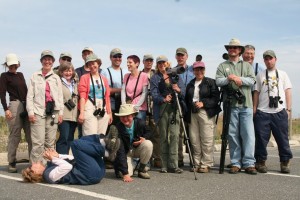 Sandy Hook Century Run Team 2009
Sandy Hook Century Run Team 2009
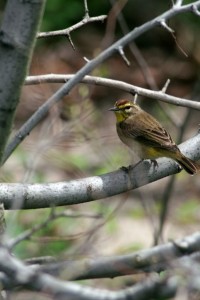 There were Palm Warblers in every beach plum
There were Palm Warblers in every beach plum
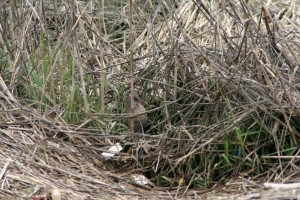 and Clapper Rails that played hide-and-seek all day long
and Clapper Rails that played hide-and-seek all day long
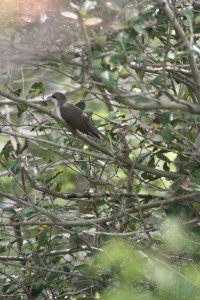 cooperative Cuckoos
cooperative Cuckoos
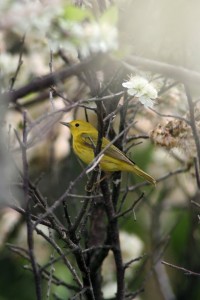 and Yellow Warblers willing to pose
and Yellow Warblers willing to pose
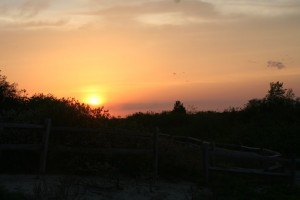 and the most spectacular sunset to end the day.
and the most spectacular sunset to end the day.
